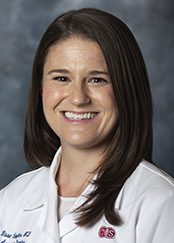The Pulse of Surgical Progress
Date
November 10, 2021
Credits

Date
November 10, 2021
Credits
Medical providers featured in this article

In Brief
{{cta-block}}
The oldest people living with congenital heart disease underwent procedures that set the standards of care for new generations.
"Patients in the 1960s and 1970s were the first brave people to undergo these initial surgical repairs that have led to improved outcomes for patients today," says Rose Tompkins, MD, associate director of the Smidt Heart Institute’s Guerin Family Congenital Heart Program. "They are living proof and living history."
Here is a brief timeline of advances in congenital heart surgery.
Seven-year-old Lorraine Sweeney undergoes the first surgical repair of a heart defect (PDA). She became a great-grandmother and lived to age 89.
Alfred Blalock, MD, Helen Taussig, MD, and Vivien Thomas implement a shunt as a temporary fix for artery and valve problems associated with tetralogy of Fallot, a critical defect. Their work marks an escalation in surgical intervention.
First successful use of the heart-lung machine, in the repair of atrial septal defect (ASD)—a hole in the wall between two chambers of the heart—inspiring a decade of advances in open-heart surgery.
Interventional procedures advance; cardiac catheterization gains momentum to treat congenital heart defects like PDA and ASD, as well as other heart disease.
The Fontan procedure begins to expand life expectancy for children with hypoplastic left heart syndrome (HLHS), in which only one ventricle is functional, and who had previously not survived past 1 year old.
The first successful arterial switch procedure, to correct the position of the heart’s two main arteries, is performed in Brazil on a 42-day-old baby.
The Norwood procedure further advances treatment of HLHS, and patients begin to survive into adulthood.
The first minimally invasive heart valve replacement by catheter is performed.
Advanced 3D modeling and imaging allow surgeons to prepare and practice for complex procedures.
Zahn's research leads to Food and Drug Administration approval of the first implantable device, by catheter, to treat PDA in newborns. Cedars-Sinai continues to study its effectiveness compared to other procedures.





